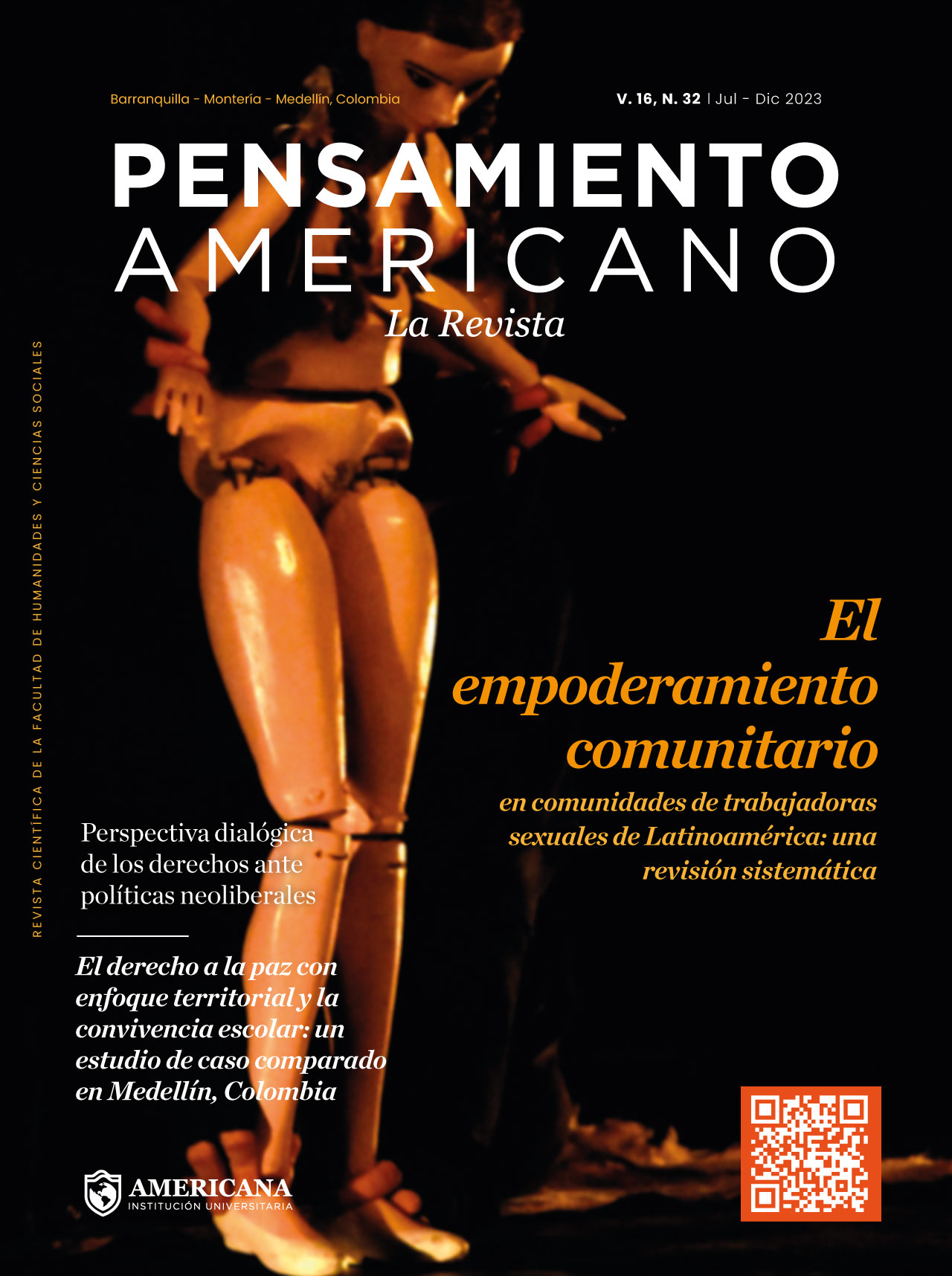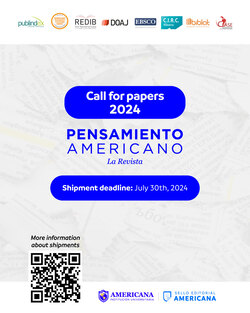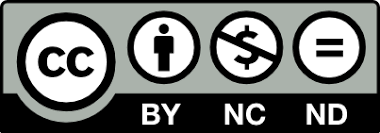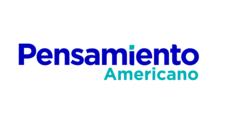Learning by doing and academic performance in Business Administration students
DOI:
https://doi.org/10.21803/penamer.16.32.659Keywords:
Higher Education, business management, teamwork, learning by doingAbstract
Introduction: Traditional education in the classroom has been questioned in its ability to respond to the needs of the knowledge society, so the center of the discussion is directed to the change of methodologies that are more suitable and coherent with the environment, such as the learning by doing methodology, expressed as experiential learning that forces the student to solve problems outside the classroom. Objective: The objective of this article is to analyze how the Learning by Doing methodology is related to the academic performance of business administration students. Methodology: the comparison of the final grades of two groups of students is proposed: group A made up of a sample of 34 students (control group that took the subject in the first semester of 2022, in the traditional way) and group B (experimental group that took the subject in the second semester of 2022 under the aforementioned methodology) made up of a sample of 29 students. Likewise, group B was measured at two moments (before and after having participated in learning by doing activities) with a pre and post test. Results: The results showed an improvement in the grades of group B, additionally an improvement in leadership, innovation and creativity skills was observed in the students of this group. Conclusions: This research highlights the need to adopt methodologies such as learning by doing in the training of business administrators.
Downloads
References
Arias, O., & Fidalgo, R. (2013). La innovación educativa en la Educación Superior. In O. Arias & R. Fidalgo (Eds.), Innovación educativa en la educación superior: fundamentos, evaluación e instrucción (pp. 13–25). Editorial Académica Española Letonia.
Azanza, G., Fernández-Villarán, A., & Goytia, A. (2022). Enhancing Learning in Tourism Education by Combining Learning by Doing and Team Coaching. Education Sciences, 12(8), 548.
Bradberry, L. A., & De Maio, J. (2019). Learning by doing: The long-term impact of experiential learning programs on student success. Journal of Political Science Education, 15(1), 94-111.
Boud, D., Keogh, R., & Walker, D. (1985). Reflection: Turning Experience into Learning (1st ed.). RoutledgeFalmer Taylor & Francis Group. https://www.ptonline.com/articles/how-to-get-better-mfi-results
De la Barrera, M. (2019). El diseño gráfico. Las transformaciones tecnológicas de una profesión creativa (1st ed.). Universidad Autónoma de Aguascalientes.
De la Barrera, M., & Ramírez, R. (2022). Aprender haciendo. La realización de proyectos gráficos a través del conocimiento tácito. ZincoGrafía, 6(12), 135–155. https://doi.org/https://doi.org/10.32870/zcr.v6i12.145
Del Castillo, Á. (2022). CASO DIDÁCTICO. GAMIFICACIÓN EN EDUCACIÓN SUPERIOR: DÁNDOLE LA VUELTA A LA FORMACIÓN EN ESTUDIOS PRESENCIALES Y ONLINE. Journal of Management and Business Education, 5(3), 282–296. https://doi.org/https://doi.org/10.35564/jmbe.2022.0017
Dewey, J. (1952). La busca de la certeza: un estudio de la relación entre el conocimiento y la acción. Fondo de Cultura Económica.
Dewey, J. (2008). El arte como experiencia. Ediciones Paidós Ibérica, S.A.
Fernández, A. (2006). Metodologías activas para la formación de competencias. Educatio Siglo XXI, 24, 35–56.
Fernández, R., & Wompner, F. (2007). Aprender a aprender. Un método valioso para la educación superior. Observatorio de La Economía Latinoamericana, 3613.
Gómez López, R., Odriozola, M. D., Llorente, I., & Baraibar-Diez, E. (2022). Teaching Organizational Structure Through the Case Method. Journal of Management and Business Education, 5(3), 297–318. https://doi.org/https://doi.org/10.35564/jmbe.2022.0018
Jonassen, D., Mayes, T., & McAleese, R. (1993). A Manifesto for a Constructivist Approach to Uses of Technology in Higher Education. In T. M. Duffy, T.M., Lowyck, J., Jonassen, D.H., Welsh (Ed.), Designing Environments for Constructive Learning (NATO ASI S, pp. 231–247). Springer-Verlag Berlin Heidelberg 1993. https://doi.org/https://doi.org/10.1007/978-3-642-78069-1_12
Margalef, L., & Pareja, N. (2008). Un camino sin retorno: estrategias metodológicas de aprendizaje activo. Revista Interuniversitaria de Formación Del Profesorado, 22(3), 47–62.
Mateos-Noza, J., & Martínez Velilla, N. (2018). El odds ratio y su interpretación como magnitud del efecto en investigación. Educación Médica, 19(1), 65–66. https://doi.org/https://doi.org/10.1016/j.edumed.2017.01.007 1575-1813/
Niiranen, S. (2021). Supporting the development of students’ technological understanding in craft and technology education via the learning-by-doing approach. International Journal of Technology and Design Education, 31, 81-93.
Nonaka, I., & Takeuchi, H. (1995). The Knowledge-Creating Company: How Japanese Companies Create the Dynamics of Innovation (1st editio). Oxford University Press.
Ontoria, A. (2004). Aprendizaje centrado en el alumno. Nueva mentalidad docente en la convergencia europea. ED.UCO. Revista de Investigación Educativa, 1, 38–61. https://doi.org/ISSN 1698-7209
Palazón-Pérez, A., Gómez, M., Gómez, J., Pérez, M. C., & Gómez, J. (2011). RELACIÓN ENTRE LA APLICACIÓN DE METODOLOGÍAS DOCENTES ACTIVAS Y EL APRENDIZAJE DEL ESTUDIANTE UNIVERSITARIO. Bordón, 63(2), 27–40. https://doi.org/ISNN: 0210-5934
Putnam, H. (1992). William James’s Ideas: with Ruth Anna Putnam. In J. Conant (Ed.), Realism with a human face (p. 422). Harvard University Press.
Robledo, P., Fidalgo, R., Arias, O., & Álvarez, M. L. (2015). Percepción de los estudiantes sobre el desarrollo de competencias a través de diferentes metodologías activas. Revista de Investigacion Educativa, 33(2), 369–383. https://doi.org/http://dx.doi.org/10.6018/rie.33.2.201381
Rodríguez-Conde, M. J., García-Peñalvo, F. J., & García-Holgado, A. (2017). Pretest y postest para evaluar la implementación de una metodología activa en la docencia de Ingeniería del Software. (Technical Report GRIAL-TR-2017-007) (Vol. 58, Issue 12). https://doi.org/10.5281/zenodo.1034822
Rodríguez Garcia, A. B., & Ramírez Lopez, L. J. (2014). Aprender haciendo, investigar reflexionando: caso de estudio paralelo en Colombia y Chile. Revista Academia y Virtualidad, 7(2), 53. https://doi.org/10.18359/ravi.318
Rodríguez, L. (2021). LEARNING NEW INNOVATIVE METHODOLOGIES USED IN COVID-19 TIMES. Journal of Management and Business Education, 4(3), 338–353. https://doi.org/https://doi.org/10.35564/jmbe.2021.0018
Ruiz, G. (2013). La teoría de la experiencia de John Dewey: significación histórica y vigencia en el debate teórico contemporáneo. Foro de Educación, 11(15), 103–124.
Schank, R. (2005). Lessons in Learning, e-Learning, and Training: Perspectives and Guidance for the Enlightened Trainer (1st ed.). Pfeiffer. http://search.proquest.com/docview/231202052?accountid=35465%255Cnhttp://sfx.dbc.dk/dbc-45DBC_UCN?url_ver=Z39.88-2004&rft_val_fmt=info:ofi/fmt:kev:mtx:journal&genre=unknown&sid=ProQ:ProQ%253Aeducation&atitle=Lessons+in+Learning%252C+e-Learning%252C+and+Tr
Zabalza, M. (2011). Nuevos enfoques para la didáctica universitaria actual. Perspectiva, 29(2), 387–416. https://doi.org/10.5007/2175-795X.2011v29n2p387
Downloads
Published
Versions
- 2023-10-23 (3)
- 2023-10-23 (1)
Issue
Section
License
Copyright (c) 2023 Pensamiento Americano

This work is licensed under a Creative Commons Attribution-NonCommercial-NoDerivatives 4.0 International License.
The author or authors of an article accepted for publication in the Journal Pensamiento Americano will transfer all of the patrimonial rights to the American University Corporation free of charge, within which are included: the right to edit, publish, reproduce and distribute both print media as digital, in addition to include in article in international indexes and / or databases, likewise, the Editorial Seal is authorized to use the images, tables and / or any graphic material presented in the article for the design of covers or posters from the same magazine. By assuming the patrimonial rights of the article, it may not be partially or totally reproduced in any printed or digital media without its express permission.
AUTHORITY ASPECTS
For the Pensamiento Americano Journal, all the authors of an article have made substantial contributions to the research and the manuscript, and they share the responsibility when the article presents errors, fraud in some way or violations of copyright.
After submitting an article, the journal does not accept the addition, deletion or change in the order of the authors, in addition we reserve the right to release the article when it has been submitted to the journal and under no circumstances will American Thought accept the article. withdrawal of an article during any phase of the editorial process






